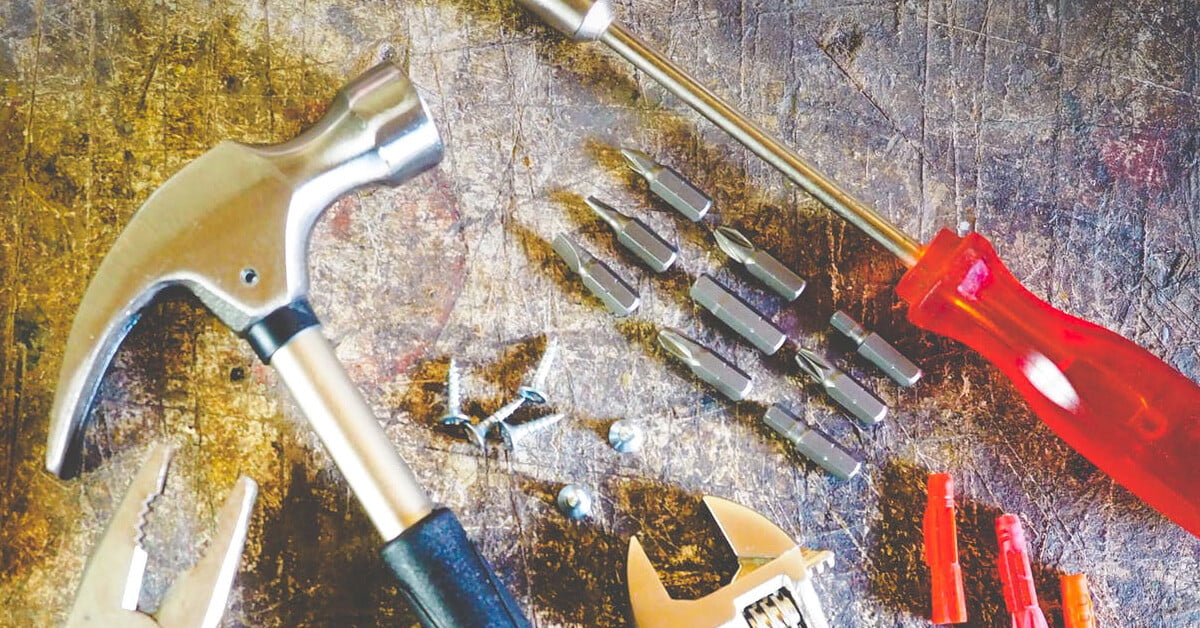
Fault Finding a CCTV System
Have you got a CCTV system that doesn’t work any more, or maybe a couple of cameras are out or even the remote view doesn’t work?
Systems can fail when the power is not pure and has spiked, your system gets too hot, your system builds up dust, you have a faulty component, you get oxidisation on lead contacts, you accidentally change a setting without realising, you change your modem or other network device, your system is a cheap quality or it’s just too old, so we will go through some basic steps to help you get it going again (if possible).
No image on screen
If you can see the lights on your recorder (NVR, DVR or XVR) but there is no image on the screen there could be a few things that have happened which could cause this.
The first step is the check your screen input, many computer monitors can easily switch by touching the front without even realising, if that fails, check your cables, it may be a HDMI or a VGA cable depending on your set-up, however both deliver similar results, except we generally find less issues with VGA cable. If you are using a HDMI cable, try another one, and make sure it is a 4K compatible lead as lower in quality may not be reliable. Once you are sure your lead is ok, but you still don’t have a picture, your recorder output may have been set to a resolution your TV/Monitor does not support, if this is the case, grab a different monitor that is more modern from your PC or borrow one, plug it in and see if that monitor can pick up the image.
If the image is still not there, try a different type of lead, so if you are currently using HDMI, try a VGA lead or vice versa. There is no particular order for the above, and in most cases you will resolve your issue, but make sure if it was an output resolution, go to your recorder display output setting and reduce the output and test on your original monitor, keeping in mind this will reduce the quality of the images you see.
Key points:
Double check your screen is set on correct input
HDMI lead that is 4K and good quality
Try changing from HDMI to VGA lead or vice versa
Try a different monitor and If you get in, try reducing your display output so your existing screen will work again
System won’t boot up (start)
If your entire system won’t boot up, this is normally a power issue or a cable issue and is easy to identify. First check your power supply and make sure it is plugged it, most have a light that is on when they are plugged in, check for that. You will also notice it is warm (sometimes hot), this is normal and shows the unit is powered, if it is stone cold with no light, it could have failed. If it is warm, follow the cable that goes to the recorder and make sure all plugs are securely pushed in, you can also pull them out and push back in to re-seat them.
If the same power supply uses a splitter cable and powers each camera, unplug each camera one by one waiting 5 seconds between and see if the system starts booting up, this is to test if you have a failed camera that is causing the system not to start.
Next you will need a multi-meter and ensure the power supply is putting out the correct voltage, check what is written on the power supply and ensure the multi-meter reads the same voltage within about 1volt difference.
If your power supply is faulty, DO NOT swap with a unit you have at home, CCTV power supplies are specific and have very strict parameters, even though another power supply may read the same, it could kill your entire system including every camera, purchase a CCTV rated power supply with exactly the same voltage, current and brand if possible. We strongly recommend you contact your place of purchase or another CCTV specialty store for a replacement.
The last thing to check is whether the HDD (Hard Drive) has failed and causing a short, this is a rare event, but does happen. To check that you will need to unplug the recorder, open it up, then unplug the HDD inside (you do not need to remove it, just unplug the leads). Once that is done, power it back up and see if the recorder starts, if it does, you need a new HDD.
Key points:
Check power supply, make sure it is correct voltage and working
Check splitter cable or other connectors and re-seat them
Check cameras for short circuit
Check HDD for short circuit
Camera(s) not working
Here it gets a little more complicated as there are many areas, particularly with IP systems, however the basics are as follows.
For Analogue (CVBS), TVI, CVI, HD-SDI, AHD the problems are almost always power, cable, faulty camera, faulty recorder so we will go over each.
The easiest area to check is behind the recorder, check your power supply for the cameras using the same methods as above and unplug then plug back in the connectors to re-seat them, many times your camera(s) will start and away you go. If the cameras do not start and you have some that work and some that don’t, swap the positions where the cameras are plugged into the recorder and see what happens. This will show you whether the input channel is damaged on the recorder or the fault is outside the recorder. If the fault stays on the same channel, regardless of a whether a working camera is plugged in, it’s probably a faulty recorder and needs replacing, if the fault follows the camera, it will be the camera, cable connectors or power supply.
Sometimes you may get rats or mice in your ceiling and surprisingly, they love to eat some brands of cable and this is a more common issue that you would expect, you also get dampness in your eaves so your connectors at the camera end may have started to rust or oxidise causing connector issues. This is hard to fully check, however you can get an idea by looking at your camera at night and checking for the IR red glow, or placing your hand on the camera and feeling if it is warm. If the camera is warm or you can see the glow, at least you know the camera is getting power.
After completing the above you should now know where the fault is re camera vs recorder. To check the actual cable is difficult without testing equipment, however if your cameras are easy to reach, and you are sure the power is getting to the camera (by checking warmth/glow), swap a working camera with a non-working camera and see where the fault goes, if the fault stays on the same channel, you probably have damaged cable or connectors in your ceiling, if the fault stays with the camera, you have a faulty camera that needs replacing.
Key points:
Check connectors and power supply behind recorder
Check power to camera
Swap channels on recorder to see where fault goes
Swap cameras to see where fault goes
For IP cameras it gets a little more tricky as it may be an IP conflict or you have changed your modem and now have a new IP range, if these are the causes, unless you know what these terms mean, you may need an IT/Networking person to assist.
To see if it is the above, try unplugging the network cable that goes between your recorder and modem, this will isolate your system from the rest of the network, restart the NVR recorder and see what happens, if things change and get better, it’s probably network related, if they do not, then try the following.
To see if it is a burnt out channel/port on the NVR, unplug the camera and swap it with a working cameras socket, if the problem stays with the camera it is probably the camera or the cable/connectors, if the problem changes to the other camera, it is probably a burnt out channel/port on the recorder and your recorder needs replacing.
NVRs use Cat5/6 and RJ45 connectors which like all connectors can oxidise over time and lose connectivity, they are also loved by mice and rats in your ceiling as well as dampness near the camera. The easiest way for an IP system to see if your internal cables are damage is to remove the camera, and plug it into the back of the NVR with a small cable. If the image appears and the camera boots up, you have a cabling issue and your cables in the ceiling may need replacing or at the very least new connectors added. If the camera won’t boot up when plugged into the back of the NVR, you have a faulty camera (unless it’s the above mentioned network issues).
Key points:
Isolate system from network and reboot
Swap connectors on back of recorder to see if it’s the camera or recorder
Remove the camera and plug it into back of recorder using small network cable
Remote view
This is possibly the most common complaint with CCTV and really boils down to a few things that could be causing it. If your recorder is only a couple of years old, you will have P2P remote, which is the superior method, for older systems you would use the riskier method of port forwarding. OzSpy does not perform port forwarding due to the risks associated with it and we strongly recommend you replace your recorder with the new P2P technology.
For P2P systems firstly you may have changed modem or internet provider, which may have changed your network, for a non IP system like Analogue (CVBS), TVI, CVI, HD-SDI, AHD, go into your network settings and click DHCP then reboot your recorder, this should fix your issues and away you go.
For IP systems it may be more complicated and you may be better off setting your gateway of the new modem back to the old gateway address, changing the NVR to DHCP may open up a can of worms for you. We recommend you get professional assistance when IP systems are affected by a new modem.
Sometimes you may also lose remote access because your phone did an update, if this is the case, go to the app developers page and update the app, this will normally fix it. If they do not have an update, wait a few days and check again, most developers stay on top of this.
Lastly if your remote stops for none of the above, you just may be in a bad data area or these is a temporary data issues where the recorder is, this will normally resolve itself within a day or two, or after you are in a better data coverage area.
Key points:
If you changed your modem and your system is not IP activate DHCP in the recorders network settings
If your recorder does not support P2P it’s time to upgrade
Keep your apps up to date
Try later when you are in a better area
Try later, there may be a temporary data throttle
